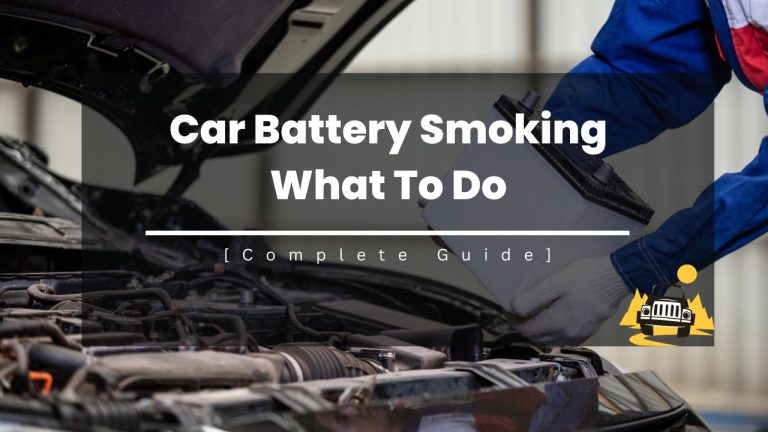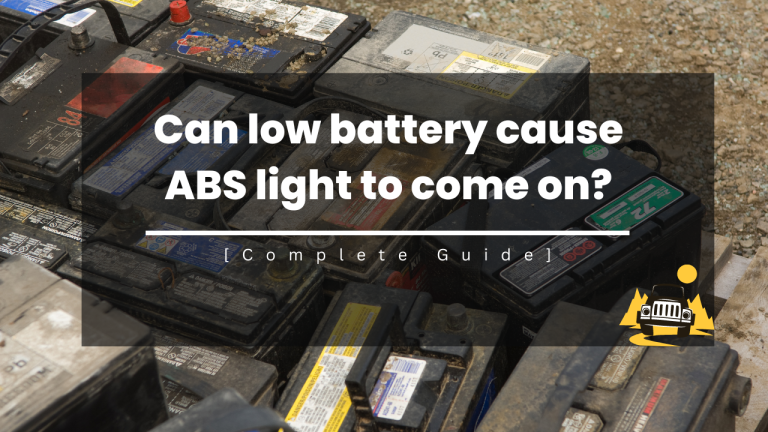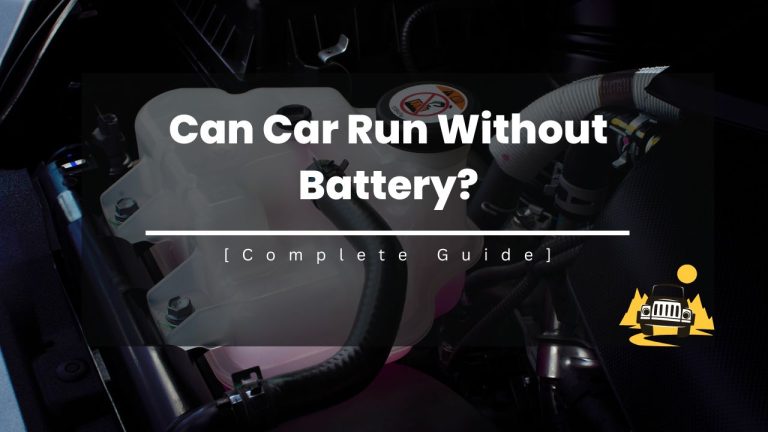Does Car Battery Charge When On?
To simply answer your question, yes, the car battery charges itself when the car is on. But as it is a bit complex in itself that how does car battery charge when on?
So we have collected some valuable information about it from thorough research.
If you want to know how that happens and what type of chargers charge your car battery efficiently, then please stick with us. We have also figured out some ways of keeping your car battery safe and healthy from electric problems.

Does car battery charge when on?
So as we have told you that a car battery charges itself when the car engine is on. Actually, this doesn’t happen just magically. There’s a proper science and components of the car engine that make this happen.
So there’s an alternator in the engine of the car that is responsible for the car battery to keep charging.
The alternator is an electricity-producing component of the car engine that runs with the engine belts. The alternator is directly spun through the serpentine belt. When this device runs, it runs at a certain speed and produces a fixed amount of electricity in the system.
And that electricity is then transferred to the battery through wires. Now the electricity generated by the alternator is fixed at 14-15 volts. Even though it is an official way of charging a battery, you should know why does a battery go flat?
4 Reasons for a car battery to go flat
Well, there are multiple reasons for a car battery to go flat because it engages the most in the car engine system. The most important reason is leaving your lights and other electrical components on while the car is parked.
Also, sometimes your car battery is not charging as fast as it is discharging. The corrosion on the battery terminals and the connectors also causes a good battery to go flat. Then there’s leakage of the electrolytes and whatnot.
But whatever the reason occurs, the battery just goes flat and you can be stranded in the middle of nowhere just because of that.
But the above information was all about when the car is on, imagine if the car is not turning on. In that situation, you’d have to go the other way to keep moving.
1. Charging a dead car battery vs. Jumpstarting the car
Both car battery charging methods have the same objective and that is turning the car on. But charging your car by jumpstarting the car becomes important when you have urgency.
Similarly, charging your car properly with a car battery charger or by idling will become necessary if you have enough time to let it charge. Now the point comes about the charging time it takes to fully charge the battery.
And for that, you’d need to read ahead.
2. Charging time for a dead car battery
The charging time of a fully dead car battery depends on various circumstances. It depends on your car’s battery health, corrosion, electrolytes, connector cables, connection success, and battery cells.
But on average if the battery was in very good condition before being dead, it will take at least 20-30 minutes to charge the battery to the basics.
After that time, the battery will have enough charge in it to power the car’s ignition system to turn it on. When the ignition system starts the car engine, the engine’s alternator starts powering up the battery.
After your car is now turned on, you can take it to the nearest professional help services station. And there if they put it on charge and let it fully charge up, then it will take anywhere between 1 hour to 24 hours. Basically here the total charging time varies because of your battery’s overall condition.
3. Knowing if the car battery is charging or not
Charging of the battery automatically starts when a car is turned on because of its alternator. But sometimes it happens that you do not know whether the car battery is actually charging or not.
This happens when you are continuously driving for like an hour but the battery icon is still blinking on your screen. So what happened to the battery?
So sometimes your car battery connectors are loosely fixed and they don’t touch both the battery terminals. It mostly occurs when an inexperienced person tries to attach the cables to the battery terminals.
On the other hand, even if the connectors are properly fixed, the battery may still not charge. Now, this may be an alternator problem so you should get it checked.
Figures: For a small checkup of the system to see if the battery is getting enough voltage or not is very easy. To perform this checkup you just need to get a multimeter. So when you attach a multimeter to the car battery, it should be recorded at 12.6V or even more than this while parked.
Similarly, as you know that the alternator current also joins in when the car is running, so it should be recorded at 13.7 to 14.7V at least or even more than that. This is the least it should clock at otherwise, your car battery needs to be recharged, or maybe getting it replaced proves to be a better option.
4. Charging a car battery while connected is OK
Most people have been seen asking several questions and this one is the most common. Actually, this is mostly asked because of the safety tips some people give to their readers. Although the safety tips that they give you are not wrong at all because it is better to be cautious than regretting your decisions.
But according to our experience, we can assure you that charging your car battery while the battery terminals are still connected is also safe. So it is OK if you take this precautionary measure or not because you’re good to go.
But still, touching the terminals with bare hands is not included in this at all. Also, if you can adopt those precautions then you should for added safety. This instruction is for those cars that are totally garaged and cannot move outside or at least away from the unsafe place.
Final Takeaway
So what did you learn from this article? Does car battery charge when on? You know that yes it does, right? But for those circumstances when the car isn’t even turning on, you can ask for help.
It is better to go for professional help if available but there are some easy and simple helpful tips as well. You can read our other articles on this niche to fully understand what is to be taken care of while practicing those procedures.
Does car battery get automatically charged?
No, if you think that a car battery gets automatically charged, then this is not true. In fact, a car battery gets electric voltage for charging from a device called the alternator. An alternator is basically a device that runs and produces electrical voltage and then transfers it to the battery.
How do you tell if a car battery will hold a charge?
Holding charge in a battery is basically the capacity and health of the battery. And you can check this out by using a multimeter that, when attached to the battery, will tell you the voltage of the battery. If the voltage is 12.6V or higher than this, then the battery is in good condition and can hold a charge. But if it is lower than that, it might need to be replaced or at least checked by professionals.
How long should I idle my car to charge the battery?
Idling a car to let its battery charge, is a good idea if you don’t want to go anywhere but want to store charge in its battery. And for that to happen effectively, you need to keep the car on and idle for at least 20 -30 minutes straight. It will not charge the battery fully but the charge stored in it will allow the battery to start the ignition one more time.
How often should I start my car to keep the battery charged?
Well, if you want to keep your car battery charged for a very long period, then you need to drive your car for at least 30 minutes straight. Weekly 30 minutes drive gives your car enough time to get recharged and be in good health. And drive should be continuous and must be at least the highway speeds so the alternator can do its work effectively.
How many times can a car battery be recharged?
Batteries have charging cycles and most of the car batteries on the market last from 500-1000 charging cycles per lifetime. After that, the battery may need to be changed but it still works if you took good care of it. And if we convert these charging cycles to time, then it becomes anywhere between 3 years to 5 years. You can make it last even longer than that if you take good care of your battery.





